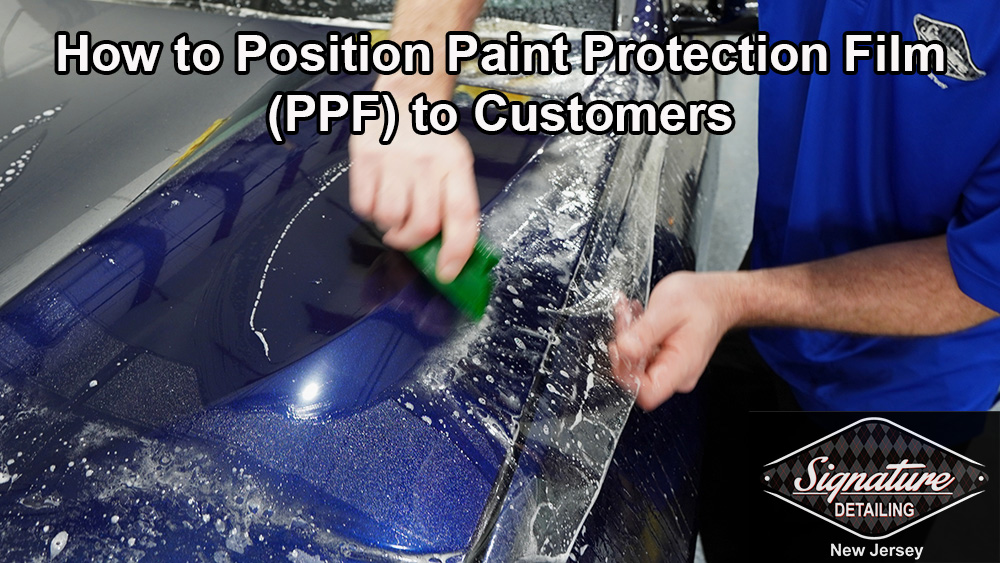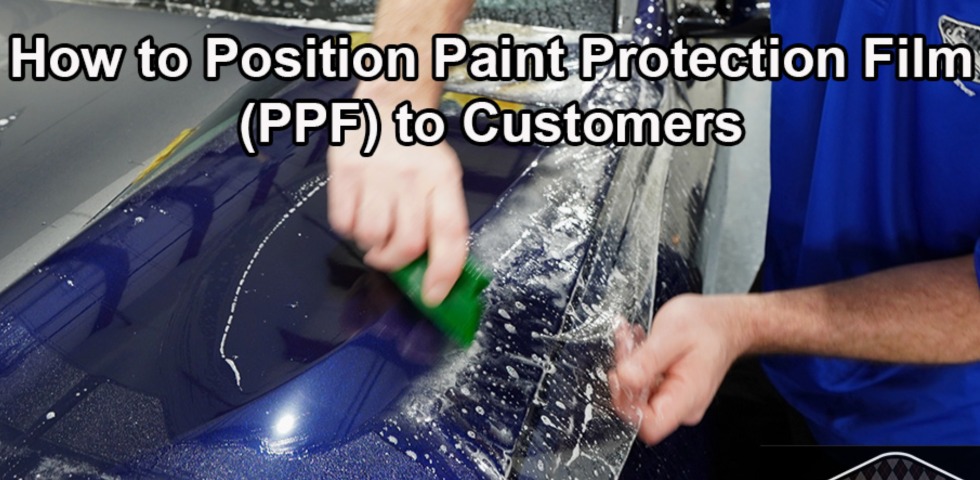
As a detailing business, understanding how to position paint protection film to customers is critical. PPF aka Clear Bra is the undisputed king of vehicle surface impact protection.
At Signature Detailing New Jersey we quickly dispel any myths that claim a ceramic coating may substitute the protection offered by PPF.
Our goal is to empower vehicle owners with the information so they can make the best choice without pressure sales tactics.
This article will explore the important topics to effectively positioning PPF or Clear Bra so consumers may make accurate and informed decisions for their vehicle needs.
Analyzing Customer Vehicle Protection Preferences with One Question
Paint protection film is only a viable solution for a customer if they are worried about keeping their surfaces looking pristine.
To assess each customer vehicle surface preferences, we start with one simple question:
Will a rock chip, scratch, or small impact bother you every time you notice it on your vehicle?
If the customer answers ‘yes’ or ‘absolutely’: we inform them that PPF is the best option to keep surfaces protected and looking their best.
If the customer answers ‘no’ or ‘it doesn’t bother me’: we inform them that a ceramic coating is likely their best bet for protection. We then go on to explain the benefits of our specific coating formulations that best fit with their vehicle needs.
This is the simplest, no pressure method for understanding if a customer is an ideal candidate for paint protection film.
Educating Clients on the Full Protective Capabilities PPF/Clear Bra
Now that we’ve established the customer’s preference is to best preserve the vehicle surfaces, we can explain all of the protective capabilities of PPF or Clear Bra for vehicle surfaces.
Explaining to clients that ceramic coatings are the best non-impact protection is an important distinction.
There is no scenario where ceramic coatings between 1-3 microns can offer impact protection comparable paint protection film (PPF or clear bra) delivers. It doesn’t matter what companies claim or market.
You wouldn’t believe that a rash guard could protect you from a shark attack, would you?
Similarly, you shouldn’t believe companies that market or advertise ceramic coatings as impact or scratch protection. They are far too thin to have the amount of mass to do so.
Most ceramic coatings hope to obtain 2 microns on the surface. In contrast, the average PPF measures 200 microns thick and some even 250 microns. So, all this internet smoke and mirrors shiny advertising about ceramic coatings protecting from impacts and scratches—well it’s just a farce.
What follows are the actual real-world benefits of installed paint protection film on automotive surfaces:
- Constant protection from rock chips, road debris, insects, door dings, pets and children.
- Potential for added gloss or a matte finish
- Additional UV protection
- A sacrificial barrier guarding against contamination such as: tree sap, road tar, bird droppings, & more.
- Assurance that surfaces will look their best long-term
Explaining the Characteristics of Paint Protection Film to Customers
Lastly, after uncovering the customers preference to best protect their vehicle and explaining all of the benefits of PPF, we then need to inform them how PPF or Clear Bra’s functions in use and over time.
At Signature Detailing NJ we love paint protection film. In fact, it’s one of the first things we do to all of our own personal vehicles. However, we are also consumers, and we appreciate understanding the full picture before making purchase decisions.
Therefore, as standard practice we offer full disclosure to all potential customers about PPF, including the following topics:
- Clear Bra is a wear item, its primary function is protection of its installed panel. It’s designed to protect and to eventually be replaced over time.
- Paint Protection Film will protect from most impacts, however overly heavy or jagged pieces of film may penetrate the film at any time.
- Clear bra, worn from repeated impacts or extreme heat, sun exposure, or with many years of heavy use may eventually fail.
- The realistic lifespan of PPF for daily driven vehicles is most likely between 6-8 years.
- PPF should not be washed in a method allowing pressurized water closer than 24” to each panel’s edges. If this happens water may be forced under the edges and potentially start delaminating the film from the panel.
Final Thoughts on How to Position Paint Protection Film to Customers
If all these points are effectively communicated, within a detailing businesses sales process, the paint protection film essentially sells itself.
Additionally, the business has fully educated, helped, and satisfied the client with full information regarding all aspects of PPF/Clear Bra and has likely answered all questions, including most common objections, posed by the client.
This level of transparency and knowledge builds tremendous trust and rapport. And this is the way to gain clients that proudly declare “you just made clients for life.”
